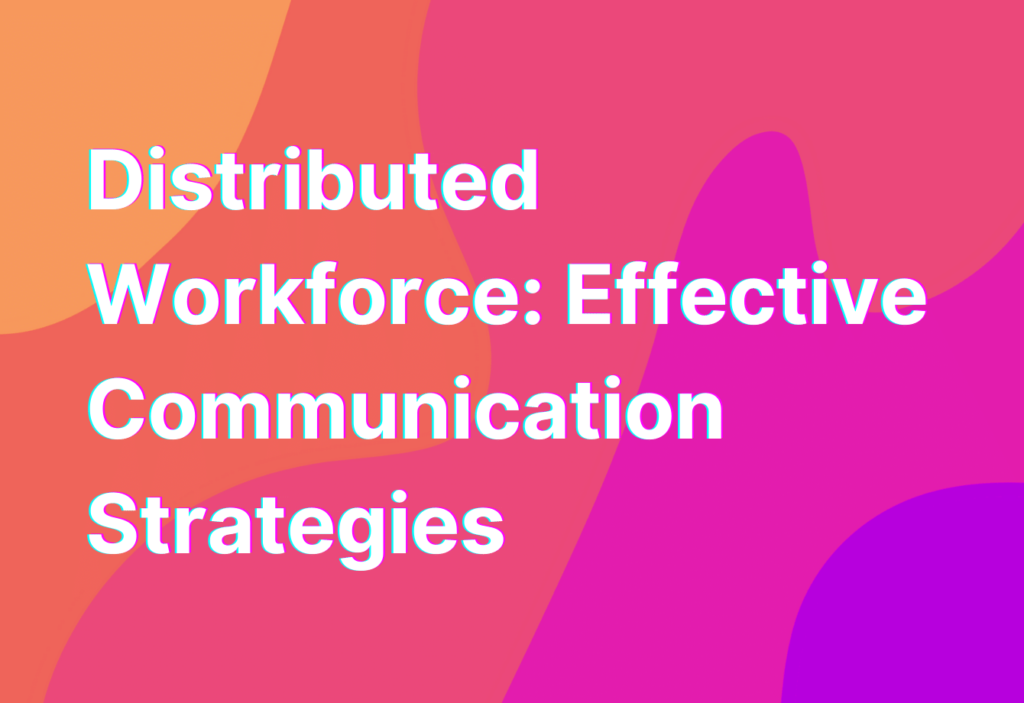Distributed Workforce: Effective Communication Strategies
Hey there, remote work enthusiasts! Ashley here, your go-to gal for all things remote work. Today, I want to dive into the world of distributed workforces and share some effective communication strategies to help you and your team thrive. So, grab your favorite cup of coffee (or tea, if that’s your thing) and let’s get started!
The Rise of Distributed Workforces
In recent years, distributed workforces have become increasingly popular. With advancements in technology and the ever-growing desire for work-life balance, more and more companies are embracing remote work. A distributed workforce refers to a team that is spread out geographically, working together remotely. This can include employees working from home, co-working spaces, or even different countries.
Now, you might be wondering, why are so many companies jumping on the distributed workforce bandwagon? Well, there are several benefits to this setup. For starters, it allows companies to tap into a global talent pool, giving them access to a wider range of skills and expertise. It also eliminates the need for a physical office space, reducing overhead costs. And let’s not forget about the flexibility and autonomy it offers employees, which can lead to increased job satisfaction and productivity.
Effective Communication is Key
While distributed workforces offer many advantages, they also come with their fair share of challenges. One of the biggest hurdles is maintaining effective communication among team members who are physically separated. Without face-to-face interactions, it’s crucial to establish clear and efficient communication channels to ensure everyone is on the same page.
So, how can you foster effective communication within your distributed workforce? Let’s explore some strategies:
1. Embrace Technology
Technology is your best friend when it comes to remote work. Utilize tools like video conferencing platforms, project management software, and instant messaging apps to facilitate communication. Platforms like Zoom, Slack, and Trello can help bridge the gap between team members and create a sense of virtual togetherness.
2. Set Clear Expectations
When working remotely, it’s essential to establish clear expectations for communication. Define response times, preferred communication channels, and guidelines for sharing updates and progress. This ensures that everyone is on the same page and knows what is expected of them.
3. Foster a Culture of Trust
Trust is the foundation of any successful team, and it becomes even more crucial in a distributed workforce. Encourage open and honest communication, and create an environment where team members feel comfortable sharing their thoughts and ideas. Trusting your team members to get the job done, even when you can’t physically see them, is key to building a strong remote team.
4. Overcommunicate
In a distributed workforce, overcommunication is better than undercommunication. Since you can’t rely on non-verbal cues, it’s important to be explicit and clear in your communication. Don’t assume that everyone knows what you’re thinking or what needs to be done. Take the time to provide detailed instructions and ask for clarification when needed.
5. Foster a Sense of Community
Working remotely can sometimes feel isolating, so it’s important to foster a sense of community within your distributed workforce. Encourage team bonding activities, such as virtual happy hours or team-building exercises. This helps create a supportive and connected team, even if you’re miles apart.
And there you have it, folks! These are just a few effective communication strategies to help your distributed workforce thrive. Remember, communication is the glue that holds remote teams together, so invest time and effort into building strong communication channels.
Wrapping Up
As remote work continues to gain popularity, mastering effective communication strategies is essential for the success of distributed workforces. By embracing technology, setting clear expectations, fostering trust, overcommunicating, and creating a sense of community, you can ensure that your remote team is productive, engaged, and connected.
For more tips and insights on remote work, check out our Empathy: Remote Teams’ Effective Communication Strategies article. Trust me, you don’t want to miss it!


